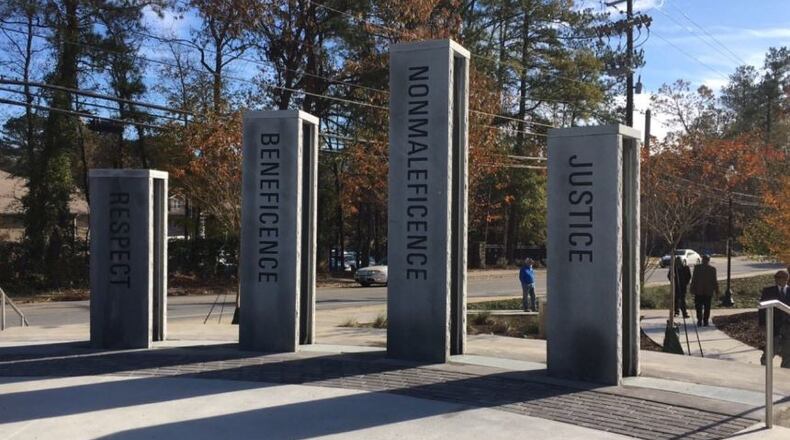Atlanta Mayor Kasim Reed, Commissioner Amy Phuong, Department of Parks and Recreation staff, Atlanta City Councilmember C.T. Martin, community leaders and family members of doctors who practiced at Southwest Hospital joined together on Nov. 22 to celebrate the opening of the new Doctors Memorial Park in Southwest Atlanta. The park, at 500 Fairburn Road SW, is named in honor of the historic Southwest Hospital, formerly named Holy Family Hospital and the doctors who played a vital role in providing healthcare and supporting the wellbeing of the community.
Holy Family Hospital was erected in 1962, several years after the Medical Mission Sisters of the Catholic Church had a vision in 1948 to build a facility for African Americans due to a shortage of hospital beds for lacks in Atlanta.
In 1972 the hospital administrator shot and wounded two community activists, Arthur Langford and Willie Ricks, who were engaged in a hunger strike in support of striking hospital employees. Several community activists including the Rev. Joe Boone had gathered in a tent in front of the property to discuss strategy when Langford and Ricks were shot. This racially charged incident was a major pivotal point in integrating the health care system in Atlanta and the South at the time.
The Catholic Medical Mission began operating a free clinic for black patients in the Third Ward in 1943. Black doctors gave care there. Hughes Spalding was the only fully equipped hospital for blacks when Holy Family Hospital was built in the 60s. Sister Theophane used Mission funds monies raised largely from white donors for construction of the hospital across the street.
About the Author
The Latest
Featured


